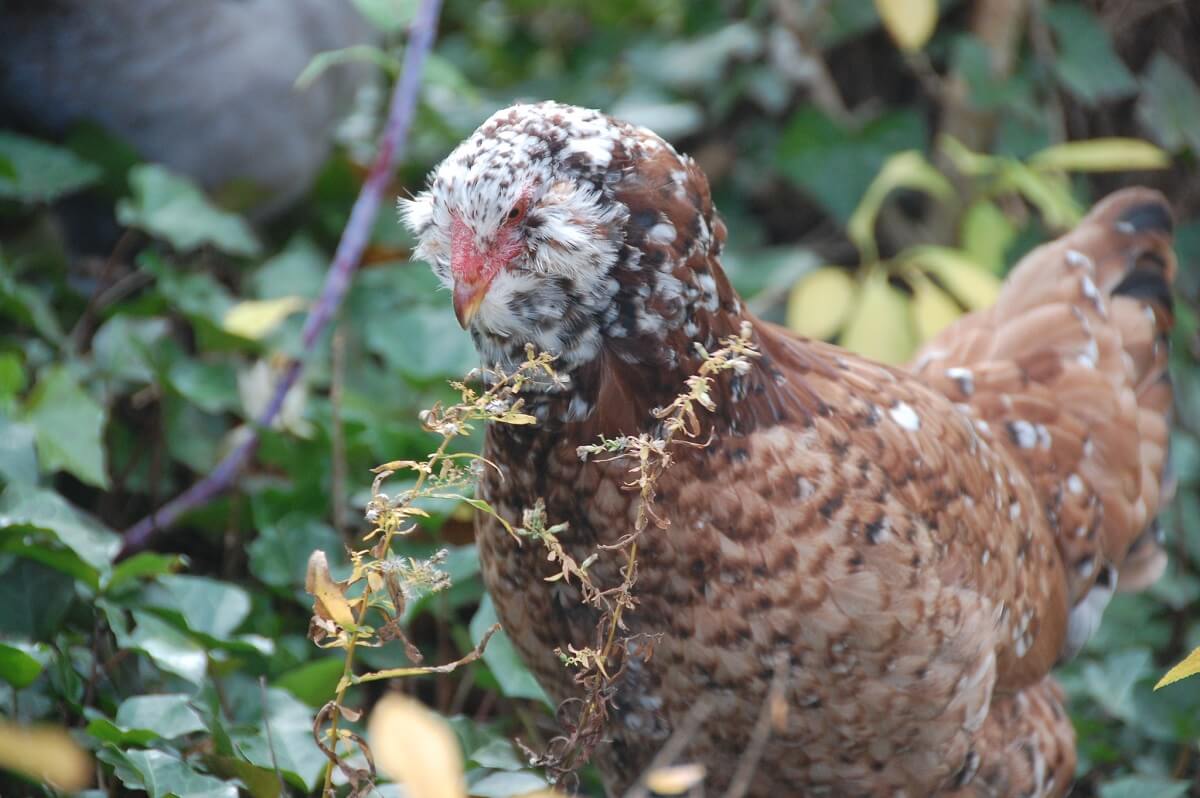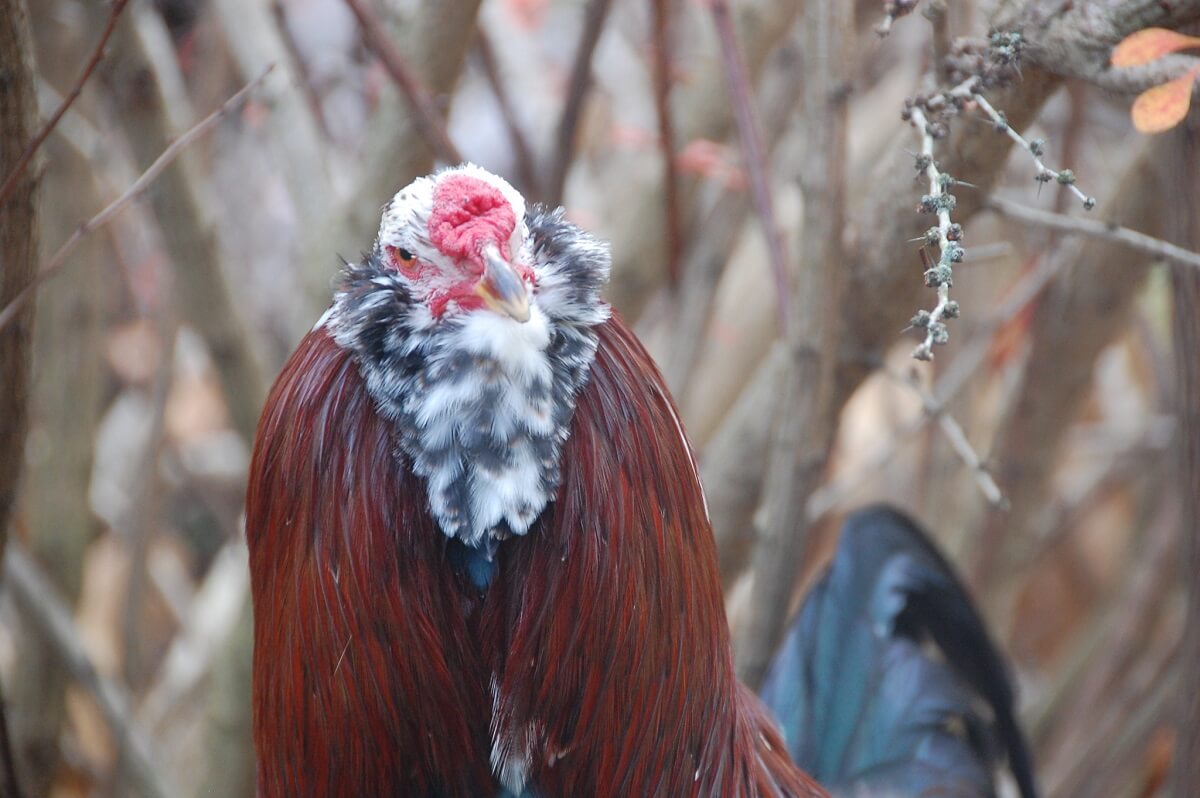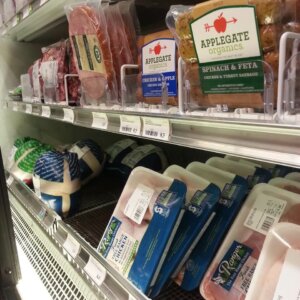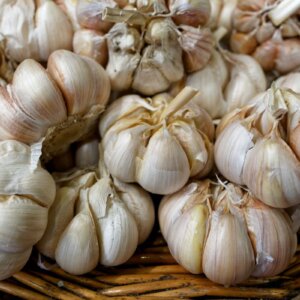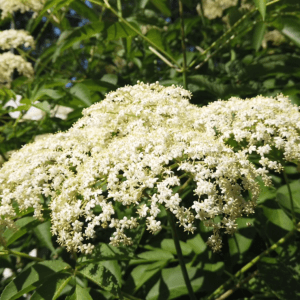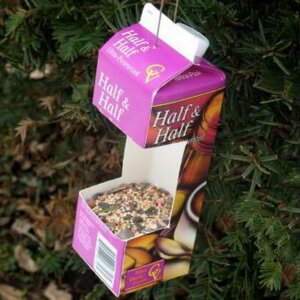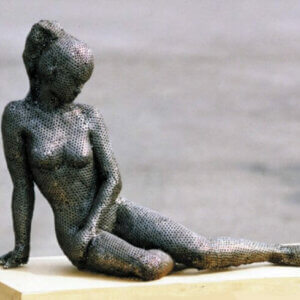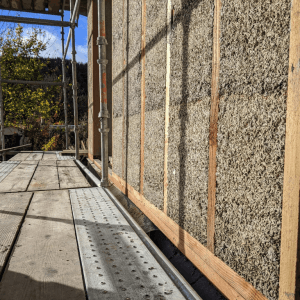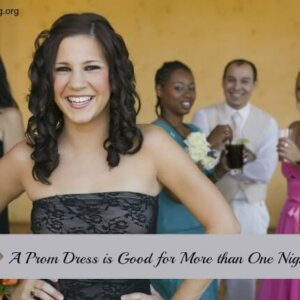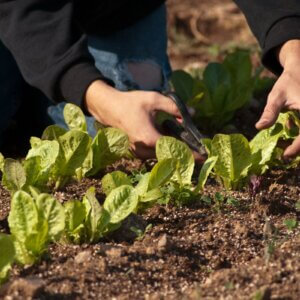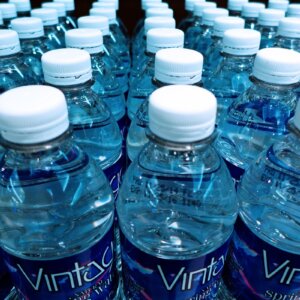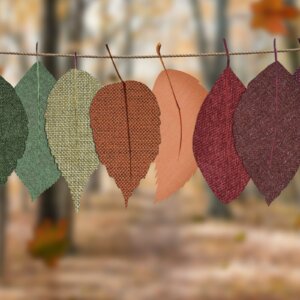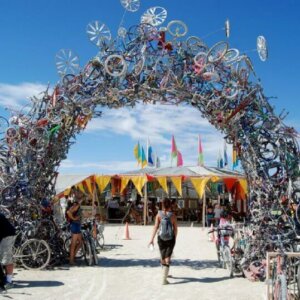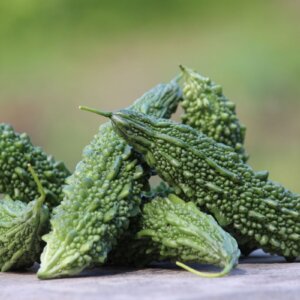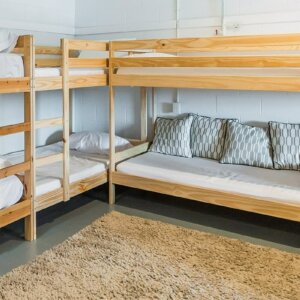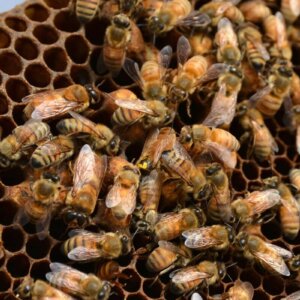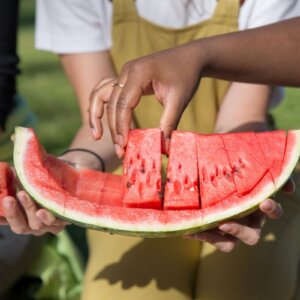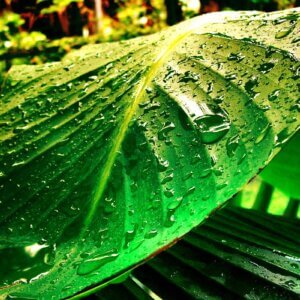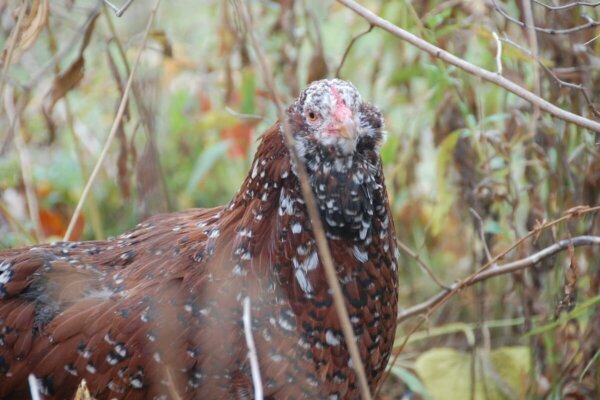
- Purpose: Meat
- Eggs: Light Brown
- Egg Size: Medium
- Color: Black, White, Red
- Comb Type: Walnut Comb
Though their upright stance and thick-set neck may have you thinking that the Russian Orloff is primed for a fight, these calm, sturdy birds would much rather cool their feet in their water bowls while regarding you with a bright, intelligent eye.
Inexplicably unpopular and undeniably unique, these ancient, Persian chickens should get more attention than they do.
Characteristics
Orloff chickens aren’t your typical-looking chicken. They resemble game birds in their posture, with strong legs and a much more vertical orientation than the curvy Orpingtons or Rhode Island Reds that you may be used to. Their heads are set atop thickly feathered necks—often referred to as “bull necks”—and their eyes are surrounded by a burly-looking set of muffs and a beard.
Barely visible among all those dense feathers is a tiny strawberry/walnut comb. With such an assortment of weather-resistant features, it’s not hard to imagine why this breed hardly gives a thought to cold and harsh winters. It is important to note, however, that their hardiness doesn’t go to both ends of the thermometer—be sure to give your Orloff chickens shade and plenty of water during the hot summer months.
This breed was developed as a meat bird, and though they are slow-growing and slow to mature, many slow-food appreciators believe they are worth the wait.
The Unpopular Orloff
The Orloff is a calm bird, but it is not known as being particularly friendly. It can blend in well with a flock of mixed breeds and will probably be a somewhat aloof part of the flock who doesn’t cause any trouble.
If you are looking for affection from your chickens, though, it may be better to look for a more human-oriented breed, like the cuddly Cochin or lovey-dovey Orpington. Despite their good looks, good temperaments, and hardiness, interest in this breed has waned so much that the American Poultry Association dropped them from being recognized in the standard of perfection.
As such, finding some of these rare, sturdy birds may be a bit of a challenge. Contacting the few clubs and associations that still support the breed will help you tap into this small, yet connected, network of chicken-appreciators. The Russian Orloff Society of USA and Canada may be a good place to start looking.
What’s the Yield?
As a meat bird, the Orloff tends to be on the larger side of the chicken spectrum. Males usually weigh in at around 8.5 pounds and females should reach 6.5 pounds.
Some sources say that the Orloff is useful as a dual-purpose bird, but you shouldn’t expect an abundance of eggs from your Persian poultry. Hens are fair layers of about two eggs a week and are known for almost never going broody. Eggs are light brown and medium-sized.
What they lack in productivity, however, they may make up for in dependability. Owing to their hardy, winter-proof natures, hens will steadily lay throughout the winter, even when all other chickens may have tapered off for the season.
Fun Facts
Though you’ll often hear them referred to as “Russian Orloffs” or even just “Russian” chickens, the Orloff was developed around the Persian Gulf area hundreds of years ago. The name comes from the Russian Count Alexi Grigoryevich Orlov, who took a fancy to the breed and promoted them to the point that they became inextricably associated with his name.
If the name sounds familiar, you may have also run into information about his other main contribution to the livestock world—the hard working Orloff Trotter horse.
Who actually created the breed is and will be a mystery. Scientists speculate that the modern Orloff chicken is derived from some combination of the Bruge, Thuringian, and Ushanki breeds. If you are interested in delving further into their history, it’s worthwhile to know that they were formerly known as “Chlianskiai”.
Pictures of Orloff Chickens
References
- Orloff Chicken Breed Information, Roy’s Farm
- Orloff, Green Fire Farms
- Russian Orloff, My Pet Chicken
- Russian Orloff, CCL Farms
- Russian Orloff Chicken, Livestock Conservancy
- Russian Orloff, Backyard Chickens
- Breeds of Livestock – Russian Orloff Chicken, Oklahoma State University, Breeds of Livestock, Department of Animal Science
- Russian Orloffs, Feathersite
- Russian Orloffs, Breed Savers
- Russian Orloff Chicken, Hobby Farms
- Why Backyard Chicken Farmers Love Russian Orloffs, Chicken Coop Guides
- Russian Orloffs, Dare 2 Dream Farms
- Russian Orloff, Chicken Junkie
- Orloffs, Feathersite

